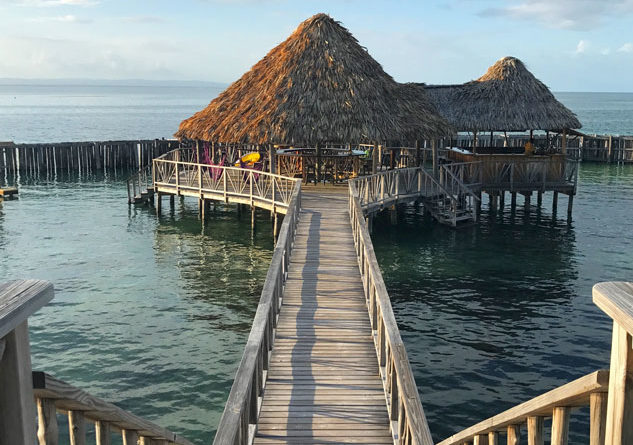Ana Lopez
EFE
Mexico City – Belize is making a big push to create a sustainable tourism industry, aiming to protect the environment and avoid mass tourism by offering boutique hotels and crystal-clear waters that are a diver’s dream.
Belizean Tourism and Aviation Minister Manuel Heredia unveiled a new tourism campaign, branded Belice: Tan exotico. Tan cerca (Belize: So Exotic. So Close), this weekend in Mexico City, targeting visitors from Latin America, especially Mexico, which is close to the Central American nation and shares some cultural and historical features.
Belize, located in the Yucatan Peninsula between Guatemala and Mexico, has a population of barely 400,000 yet welcomes about 1.5 million visitors from cruise ships and another 490,000 tourists who mostly come from the United States, Europe and Canada.
Tourism accounts for 38 percent of the Caribbean country’s gross domestic product (GDP).
“Our goal is sustainable tourism. None of that all-inclusive stuff,” Heredia said, referring to Belize’s 25-year strategic plan for the tourism industry.
Belize is serious about safeguarding its environment and some 70 percent of the country’s territory and waters already enjoy protected status.
The country has just 9,000 hotel rooms spread over 807 small boutique properties and restaurants feature local cuisine, with ownership in the hands of Belizean entrepreneurs.
Legend has it that pop singer Madonna was inspired to write her 1987 hit “La Isla Bonita” after visiting the town of San Pedro on Ambergris Caye, an island surrounded by the beautiful blue waters of the Caribbean Sea, putting Belize on the map.
Residents, in turn, have dubbed the island Isla Cariñosa (The Loving Island).
The country’s other prominent ambassador is American actor Leonardo de Caprio, who purchased an island in Belize with the idea of turning it into a showcase of sustainability, the goal that the government has set for the former British colony’s tourism development.
“There isn’t a single McDonald’s or Burger King or Pizza Hut in Belize,” Belize Tourism Board (BTB) director Karen Bevans said.
Bevans said Belize was hoping to attract Mexican tourists because even though the countries were geographically close and shared a Mayan heritage, they were neighbors who did not know each other well.
Belize’s tourism attractions are similar to those of southeastern Mexico, offering many Mayan archaeological sites, but its cuisine has more of a Caribbean vibe and the country has a bigger mix of cultures, religions and ethnic groups.
Belize is a multicultural society that is home to Mayans; Creoles; Garifunas, a mixture of Africans and Caribbean natives; and the descendants of European colonists from Spain, England and Scotland; and Mestizos, a mixture of Spaniards and Mayas.
The Spanish explored what is today Belize, a territory that became part of the Captaincy General of Guatemala, but Spain decided not to colonize the area because of its lack of resources and stiff resistance by the Mayans of the Yucatan Peninsula.
Later, English and Scottish colonists arrived in the region, followed by pirates, known as the Baymen, who established settlements on the coast in 1638, looking for hidden spots from which to raid Spanish shipping.
Belize’s main attraction is its friendly people, along with pristine waters ideal for diving and snorkeling.
The country’s cuisine is heavy on seafood, including fish, shellfish and lobsters.
Belizean cuisine is heavily influenced by Mexican and Caribbean dishes, with English food barely appearing on the culinary radar despite the country having been a British colony until independence on Sept. 21, 1981.
Rice, fish, fried plantains, coconut milk, tamales, pozol and panuchos are all eaten in the Central American nation.
Belize, home to the second-largest coral reef in the world, offers a variety of marine species that visitors can view at a number of beautiful spots, including the Great Blue Hole, a giant marine sinkhole off the coast.
The Belizean coast welcomes divers looking to explore coral reefs and some 450 small islands, or cays.
Belize, in fact, is home to three of the four coral reefs in the Western Hemisphere.
Visitors interested in archaeology can find majestic sites to explore in the jungle, including Actun Tunichil Muknal and Xunantunich, as well as the Che Chem Ha caverns, Blue Creek and Tiger Cave, treasures that represent barely 10 percent of the sites explored up until now.






